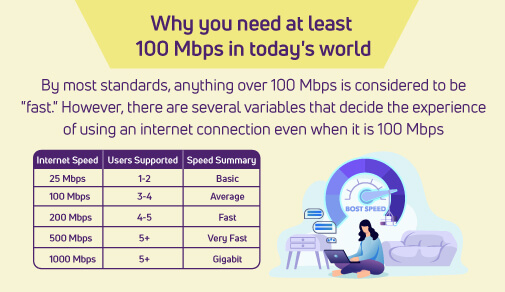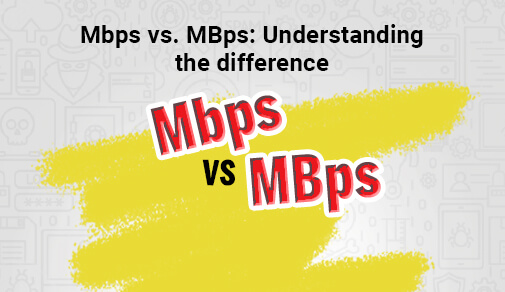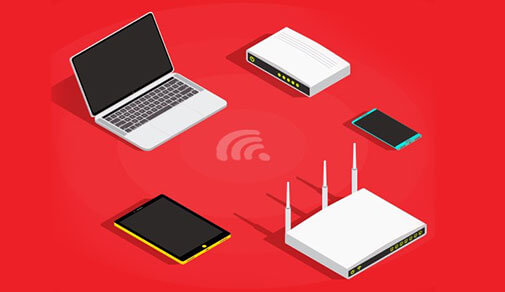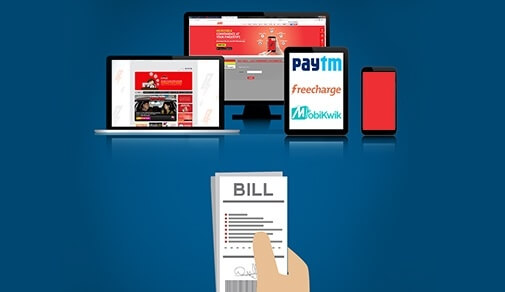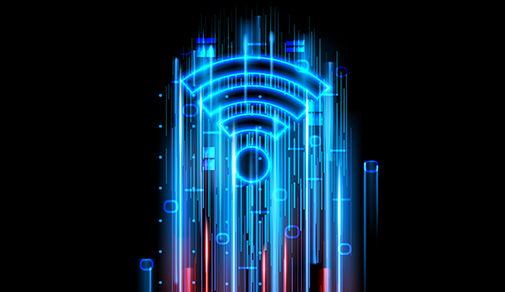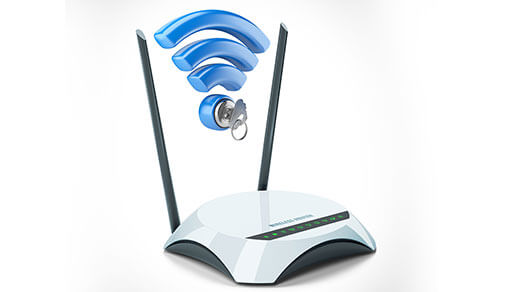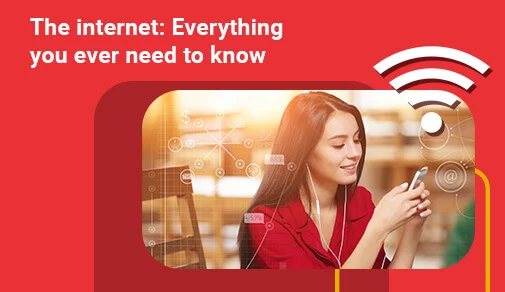
For individuals all across the world, the Internet is becoming an increasingly crucial aspect of their daily lives. However, if you've never used the Internet before, all of this new information can be overwhelming at first. We'll do our best to respond to any queries you might have regarding the Internet and how it's utilised. You'll have a good grasp of how the Internet works and how to connect to it once you've finished.
So, what exactly is the Internet?
The Internet is a vast network that connects billions of computers and other electronic devices all around the world. You can get nearly any information, communicate with anyone in the globe, and do a lot more with the Internet. All of this is possible by connecting a computer to the Internet, generally known as going online.
What is the Internet?
The World Wide Web, or simply the Web, is a collection of various websites that you may visit over the Internet. A website is made up of content, graphics, and other materials that are all related. Websites can seem like other types of media, such as newspaper articles or television shows, or they might be interactive in a way that only computers can provide. Once connected to the Internet, you can use a web browser to access and view websites. Keep in mind that the web browser is not the Internet; it merely displays websites that are stored on it.
How does the internet work?
Now that you know a little about the history of the internet, let's get down to business and answer the question, "How does the internet work?"
The internet is a global computer network that connects connecting devices and sends a range of data and media. It operates on the basis of an Internet Protocol (IP) and Transport Control Protocol (TCP) packet routing network (TCP).
TCP and IP work together to ensure that data transmission across the internet is consistent and dependable, regardless of the device or location. Data is delivered across the internet in the form of messages and packets. A message is a piece of data delivered over the internet, but before it is sent, it is broken down into smaller pieces known as packets.
Internet Protocol (IP) and Transport Control Protocol (TCP) are used to transport these messages and packets from one source to the next (TCP). IP is a set of rules that control how data is transmitted from one computer to another via the internet.
The IP system receives further instructions on how the data should be transferred using a numerical address (IP Address).
When you go to a website, your computer makes a request to a server across these cables. Websites are kept on a server, which functions similarly to your computer's hard disc. The server retrieves the website and delivers the right data back to your computer after the request is received. What's even more astounding is that it all happens in a matter of seconds!
There are a variety of other things you can accomplish on the internet.
One of the most appealing aspects of the Internet is the opportunity to speak with anyone in the world almost quickly. Billions of people use email, which is one of the oldest and most universal ways to interact and share information on the Internet. People can use social media to connect in a variety of ways and form online communities.
What can you do using the internet?
What you can accomplish online is practically limitless. The Internet allows you to locate information fast, contact with people all over the world, manage your finances, buy from the comfort of your own home, listen to music, view videos, and much more. Let's take a look at some of the most popular methods to use the Internet nowadays.
Getting knowledge via the internet:
There is a lot of information on the Internet today, with billions of web pages online. This information is more easily accessible thanks to search engines. Simply insert one or more terms, and the search engine will hunt for websites that are related.
Sending Emails:
Email (electronic mail) is a method of sending and receiving messages through the Internet. Almost everyone who uses the Internet has an email account, which is commonly referred to as an email address. This is because an email address is required for almost everything you do online, from online banking to opening a Facebook account.
The use of social media:
Another option to interact and share with your family and friends online is through social networking websites. Rather than communicating with a few people via email, social networks allow you to connect and share with a large number of people at once. With over 1 billion users globally, Facebook is the most popular social networking site on the planet.
Instant messaging and chatting:
Chat and instant messaging (IM) are real-time messages that allow you to communicate more quickly and readily than email. When both (or all) persons are online, these are commonly utilised so that your communication can be read right away. Emails, on the other hand, will not be seen until the recipients check their inboxes.
When choosing an internet connection for your home or business, you will come across quite a few types of connections - cable internet, DSL connections, Fiber optic internet connections. It is common to get confused between these and have difficulty in choosing the right connection type for you. In this article, we will be outlining the key differences and the factors you need to keep in mind while picking one type over another.
What is the best way for me to connect to the Internet?
You may wish to acquire home Internet access after you've set up your computer so you may send and receive email, surf the Web, stream films, and more. You could even want to set up a Wi-Fi network in your home so that you can connect many devices to the Internet at the same time.
Types of Internet service
Direct Subscriber Line (DSL):
DSL is an internet connection where data is transmitted over telephone lines. Telephone lines are made of copper, while copper is a great conductor, a DSL connection cannot move data as fast as a cable or fibernet internet connection. One crucial factor that will affect your decision on DSL is the distance between your home and the telephone provider’s office. This means that the farther you are from the main line, the weaker the signal, and the slower the internet connection.
Cable:
Cable internet connections run on telephone lines which use coaxial cables to transmit data, and these can carry more bandwidth than a direct subscriber line connection. When compared to DSL, a cable connection’s connectivity does not depend on the distance. However, unlike a DSL connection, which is a dedicated telephone line, cable connections are usually shared among users. This would mean that the bandwidth gets divided among users, also a lesser secure option. In terms of speed, cable connections are 3 to 4 times faster than DSL and provide speeds to 10-50 Mbps usually.
Fibernet:
Fiber optic cables are the latest technology in the internet service business. These connections make use of fiber optic cables which transmit data at the speed of light. Unlike cable or DSL, the transmission happens over glass and this is immune to all interference. There are two broad types of fiber connections - direct internet access (DIA) and a fibernet broadband. Direct internet access is an option more commonly used by businesses as it is a dedicated internet line that provides more security and reliability of connectivity. Fibernet broadband is used by individuals at homes. Fibernet speeds range from 150 Mbps to 1000 Mbps

offer 24x7 assured speeds?
Connect now to get the best of broadband plans and get additional offers on:
Questions to ask while choosing an Internet service provider
Choosing an Internet service provider can be difficult, especially if you aren't sure what questions to ask. Getting all of the facts before signing on the dotted line is one of the secrets to loving the Internet service provider you choose. We've put up a list of questions you should ask yourself so you can be a wise Internet shopper.
Do I need wired or wireless broadband?
A wired network may be the best option if the expense of updating your network is an issue and you need the highest level of security and performance. A wired connection may be sufficient for your office needs if mobility is not an issue. If you don't care about cost and desire mobility and cutting-edge technology, a wireless network should be seriously considered. Most customers pick between wired and mobile broadband depending on their internet speed requirements, but if you choose wired, you must also choose between cable and fibre networks.
If wired, do I need fiber or copper?
In India, copper-based broadband is fairly prevalent, and it is frequently combined with a fixed telephone landline connection from the same ISP. Even with various developments in this field such as ADSL, VDSL, and VDSL2+, copper upload speeds range from 5 to 10 Mbps, while download speeds range from 15 to 70 Mbps, with minor oscillations. The availability of fibre broadband is one issue. In order to bring fibre broadband to a region, fibre optic connections must be built. This is one of the reasons why fibre broadband penetration in India is still quite low. DSL, on the other hand, uses telephone lines, therefore a copper internet connection may be found almost anywhere.
What is the contention ratio?
The contention ratio is a critical parameter that determines the maximum number of internet users who can share a fixed bandwidth on a single line at the same time. So, even if you choose a high-speed internet connection, if there are a lot of people using it, the contention ratio will be high, and the internet speed per user will always be low. If the contention ratio is 1:8, for example, up to 8 homes can share the bandwidth at the same time. In India, most ISPs currently offer a 1:30 contention ratio. With the recent introduction of Fiber to the Home (FTTH) Internet in India, you may now have dedicated 1:1 bandwidth, ensuring that you get the speed you pay for with no latency or sharing.
Are there any data restrictions?
Data limits are constraints placed on your Internet usage by your Internet service provider. Not all Internet service providers will impose a data cap, and some may impose both soft and hard limits. A hard data limit means that once you've used a specific amount of data, you'll either be charged an overage fee or be cut off entirely.
Is it possible to guarantee the speeds?
Unfortunately, most Internet providers do not issue speed guarantees, but it never hurts to inquire. Find out what you can do if your Internet isn't working at the speed of your plan, even if they don't offer performance guarantees. Slow speeds can occur as a result of equipment failure or a high number of users utilising your connection.
Be Part Of Our Network
All Categories
- BUSINESS INTERNET
- Router
- Internet Security
- Wi-Fi Connection
- Wi-Fi Network
- Internet Broadband
- smartfiber
- Internet Speed
- TV Streaming
- Wifi Connection
- BEST BROADBAND PLANS
- BROADBAND PLANS | 5GHz
- 2.4GHz
- 5GHz frequency
- 5GHz WiFi frequency
- 2.4GHz frequency
- LDRs
- LONG DISTANCE RELATIONSHIP
- ACT Fibernet
- wifi as a service
RECENT ARTICLES

Find the perfect internet plan for you!
